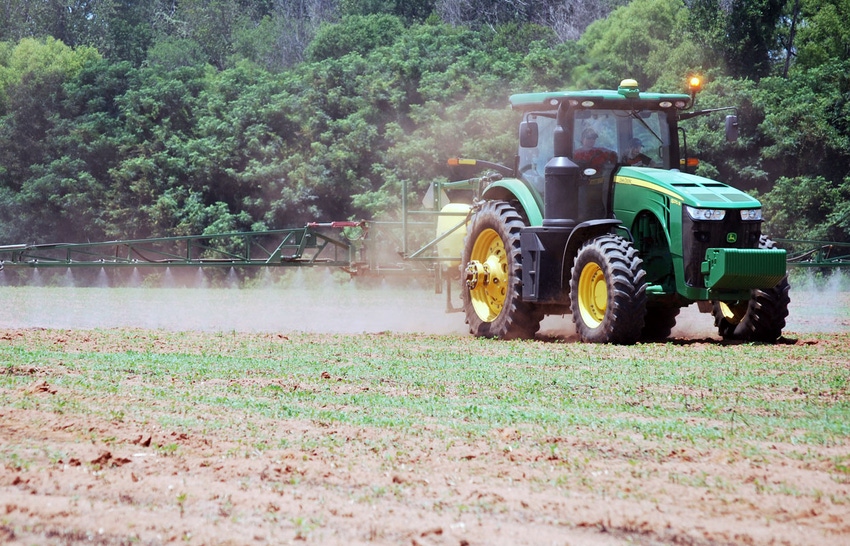
(This article was updated Jan. 31.)
If someone's in the zone, you must stop and wait for them to clear out, but EPA has proposed a change to its Application Exclusion Zone requirement under the Worker Protection Standard regulation. It involves neighboring property.
Rick Keigwin, director of EPA's Office of Pesticide Programs, reminded growers about the exclusion zone and the agency's new proposal Jan. 10 at the Southeast Regional Fruit and Vegetable Growers Conference in Savannah. Public comment on the proposal ended in January.
The original WPS was enacted in 1992. In 2015, EPA revised the WPS, including the exclusion zone, which the agency says is 25 feet in all directions for a ground rig as it moves through the field and 100 feet in all directions for outdoor aerial, air blast, air-propelled, fumigant, smoke, mist or fog applications.
Over the last four years, he said, farmers and state regulators told the agency the exclusion requirement was difficult to enforce when the zone crossed onto neighboring property.
The agency responded in October 2019 and proposed the exclusion zone around the applicator can only be enforced on the farm owner’s property, where a farmer can lawfully control the applicator or people within the zone. Ag industry leaders championed the decision, including Zippy Duvall, American Farm Bureau Federation president, and Gary Black, Georgia commissioner of agriculture.
"In the past, what you would have to do with somebody if they came into that zone while you were applying, you had to stop your operation," he said. "Now what we're saying is you temporarily stop to make sure you're not spraying those people, but as long as you don't spray those people when they're on your neighbor's property, you can continue to apply."
In the spring of 2019, he said, Congress passed a law to keep the EPA from making changes to the Worker Protection Standards nor consider changes to it until October of 2021. The law, by the way, passed unanimously through both the House and Senate and President Donald Trump signed it.
"The only change that we were allowed to consider was the changes related to this application exclusions zone," he said. "But it is important to remember you still can't spray people. If someone comes into the zone, you have to stop spraying."
The new proposal will also exempt immediate family members of the farm owner from all aspects of the zone requirement. If a family member feels safe, they can remain around the zone and not have to stay in the house or any other enclosed structure on the farm during some applications.
Also, under the 2015 revisions, an applicator must be at least 18 years old or at least 16 years old on a family farm.
The National Cotton Council supports the proposal, but in Jan. 30 official public comment, "suggests that EPA make the AEZ wind directional. This would make it comparable to buffer zones, and since drift moves downwind, it would have the same protection as an allaround AEZ without the burden of constantly worrying about who or what is within an omnidirectional distance from application equipment."
About the Author(s)
You May Also Like






